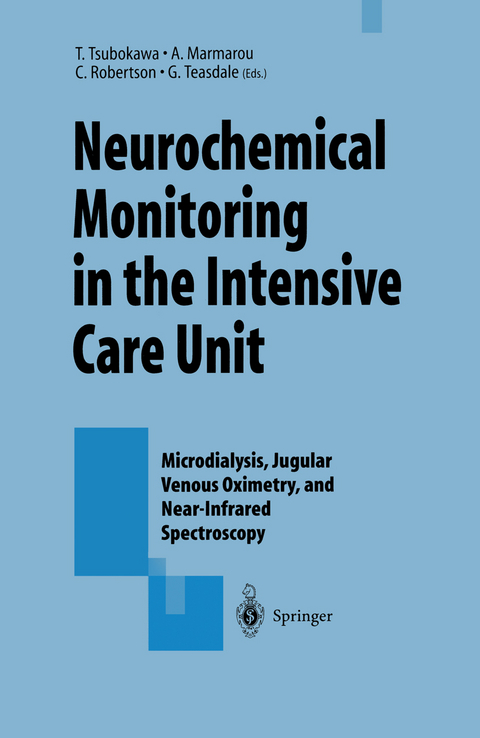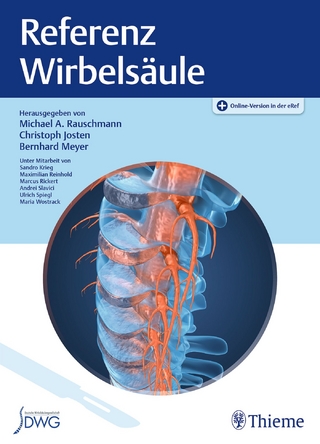
Neurochemical Monitoring in the Intensive Care Unit
Springer Verlag, Japan
978-4-431-68524-1 (ISBN)
1 Basic Problems of Microdialysis Technique.- Basic Problems in Clinical Application of Microdialysis Technique.- Glutamate Neurotoxicity as a Mechanism of Ischemic Brain Damage: A Basic Study Using a New in Vivo Model.- Delayed Neuronal Damage Following Focal Ischemic Injury in Stroke-Prone Spontaneously Hypertensive Rats.- Prolonged Stimulation-Induced Afterdischarges of Hippocampal CA1 Pyramidal Cells After Ischemia in Vivo.- The Use of Microdialysis for Monitoring the Effect of the Neuroprotective Drug CI-977 on Extracellular Excitatory Amino Acid.- 2 Clinical Application of Microdialysis Technique.- Microdialysis for Neurochemical Monitoring in Human Brain Injury.- Patterns of Excitatory Amino Acid Release and Ionic Flux after Severe Human Head Trauma.- Measurement of Excitatory Amino Acid Release in Glioma and Contused Brain Tissue During Intracranial Surgery.- Measurement of Lactic Acid and Amino Acid in the Cerebral Cortex of Head Injury Patients Using Microdialysis.- 3 Clinical Impact of Jugular Bulb Oximetry.- Benefits and Pitfalls of Jugular Bulb Venous Oxygen Saturation Monitoring.- Continuous Monitoring of Jugular Venous Oxygen Saturation in Neurosurgical ICU.- The Optimal Cerebral Perfusion Pressure Management of Patients with Severe Brain Injury.- Bilateral Jugular Bulb Oximetry.- Causes and Treatment of Desaturation in SjO2 Monitoring.- Evaluation of Continuous Monitoring of Jugular Venous Oxygen Saturation (SjO2), Regional Cerebral Oxygen Saturation (rSO2) and EEG Power Spectrum for Intraoperative Cerebral Ischemia.- Jugular Bulb Oxygen Saturation and Oxygen Consumption in Patients Receiving Barbiturate Therapy.- Does the Transient Decrease in SvO2 and SjO2 During the Rewarming Phase in a Cardiopulmonary Bypass (CPB) Merely Reflect a Recovery of the Metabolic Rate?: A case Report.- Jugular Bulb Oximetry in Patients with Cerebral Arteriovenous Malformation.- 4 Jugular Bulb Oximetry in Head Injured Patients.- SjvO2 Monitoring in Head Injured Patients.- Intraoperative Monitoring of Jugular Venous Oxygen Saturation in Patients with Severe Head injury.- Multimodal Evaluation of Cerebral Oxygen Metabolism Disturbances in Patients with Severe Head Injury.- Continuous Monitoring of Jugular Bulb Oxygen Saturation in the Management of the Patients with Severe Closed Head Injury.- CO2-Reactivity and Autoregulation in Severe Head Injury: Bedside Assessment by Relative Changes in AVDO2.- 5 Characteristics of Near-Infrared Spectroscopy.- Validation of a Noninvasive Measurement of Regional Hemoglobin Oxygen Saturation.- Validation of Monitoring of Cerebral Oxygenation by Near Infrared Spectroscopy (MRS) in Comatose Patient.- Near-Infrared Spectroscopy at the Sagittal Sinus Region: Comparison with Jugular Buld Oxymetry.- Bilateral Simultaneous Monitoring of Regional Cerebrovascular Oxygen Saturation Using Near-Infrared Spectroscopy.- Effects of Hyperventilation and CO2 Inhalation on Cerebral Oxygen Metabolism of Moyamoya Disease Measured by Near Infrared Spectroscopy.
| Zusatzinfo | XIX, 240 p. |
|---|---|
| Verlagsort | Tokyo |
| Sprache | englisch |
| Maße | 155 x 235 mm |
| Themenwelt | Medizin / Pharmazie ► Medizinische Fachgebiete ► Anästhesie |
| Medizinische Fachgebiete ► Chirurgie ► Neurochirurgie | |
| Medizin / Pharmazie ► Medizinische Fachgebiete ► Neurologie | |
| Naturwissenschaften ► Biologie ► Zoologie | |
| Schlagworte | Brain trauma • critical care • Juglar venous oximetry • Microdialysis • near-infrared spectroscopy |
| ISBN-10 | 4-431-68524-3 / 4431685243 |
| ISBN-13 | 978-4-431-68524-1 / 9784431685241 |
| Zustand | Neuware |
| Informationen gemäß Produktsicherheitsverordnung (GPSR) | |
| Haben Sie eine Frage zum Produkt? |
aus dem Bereich


